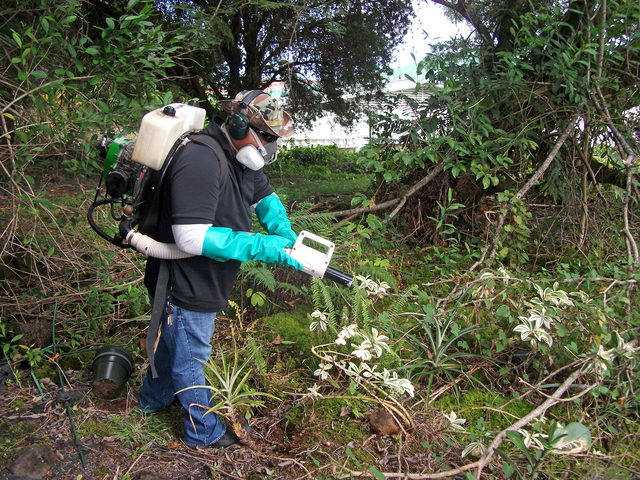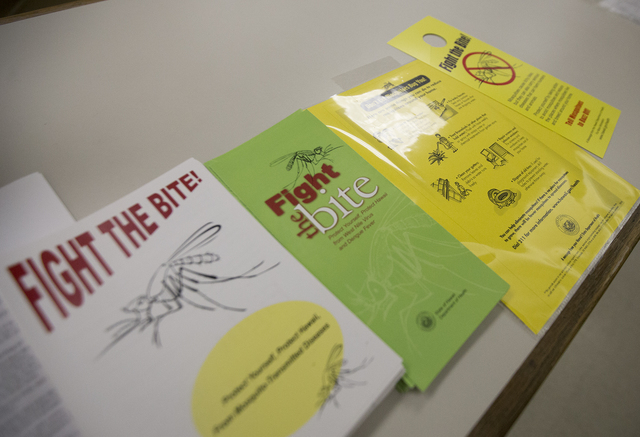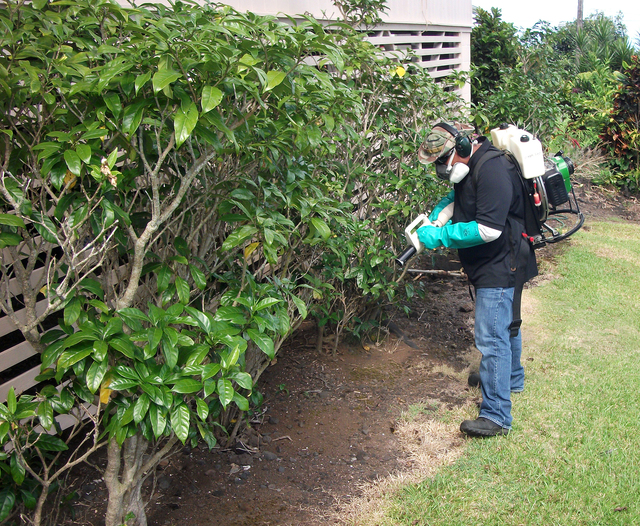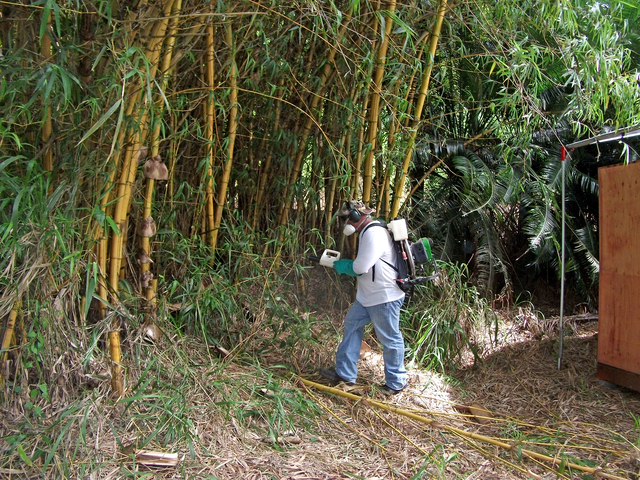Without the support of the public, state health officials fear the current outbreak of dengue fever on the Big Island could be here to stay.
On Tuesday, the state Department of Health confirmed the mosquito-borne virus so far has infected 11 people, with many possible cases remaining to be verified. Confirmation can take about 10 days because blood samples must be shipped to the Centers for Disease Control and Prevention on the mainland.
Health officials have not given exact locations where cases have been reported, saying the entire island is at risk.
On Monday, they said several cases have been concentrated near areas in Hookena and Honaunau on the west side of the island. They also confirmed cases in East Hawaii, but did not provide locations.
Workers in the Health Department’s Hawaii County Vector Control office have been busy canvassing neighborhoods where cases have been reported, testing for mosquito larvae and spraying insecticide, but if the outbreak continues to crop up in new locations and infect more people, those workers could be spread thin.
Six years ago, Hawaii County’s Vector Control branch took a big hit because of budget cutbacks, said Department of Health spokeswoman Janice Okubo.
“In 2009, the Vector Control branch in Hawaii County lost 11 of 15 positions due to a statewide reduction in force to reduce the budget,” she wrote in an email response to questions.
A division of the state DOH’s Environmental Protection and Health Services Division, Vector Control is charged with controlling populations of mammals, birds, insects and other animals capable of transmitting diseases. In the case of the current dengue outbreak, identifying and controlling populations of mosquitoes on the entire Big Island currently falls on the shoulders of just four Vector Control inspectors — two based in East Hawaii and two in West Hawaii, she said.
This year, in response to concerns about the cuts, state legislators agreed to fund two additional Vector Control field positions for Hawaii County, as well as two positions in Maui County, Okubo said.
“Those positions are currently being classified and may be recruited sometime later next year,” she said.
Meanwhile, workers on the other islands are available, should Hawaii County’s Vector Control branch request their help in tamping down the Big Isle outbreak, she said. And the state is working hard to get out the word that residents can do a lot to help state workers confront the outbreak.
“We’re really trying to get the word out to the public,” said Hawaii State Epidemiologist Dr. Sarah Park. “Specifically about the prevention messages … to say, ‘It’s on you.’ It’s not just about waiting for the Department of Health to come spray. Because that’s not going to happen, frankly. We don’t have the resources to spray every sign of mosquitoes. …
“We don’t have unlimited resources. We have to strategize. That strategy, at this point, is if we have a report of a case, send our Vector folks out, do an assessment of the property. If we see evidence of mosquito activity, either adults or eggs, then we’ll abate as needed. If we see no sign, then nothing will be done.”
Because mosquitoes typically remain within a 200-yard area, spraying will be done within that radius where cases are reported, she said.
However, because of the size of the island and the availability of resources, much of the prevention efforts will have to fall on residents to prevent the disease from becoming endemic here.
“The perpetuation of dengue really relies on mosquitoes biting humans,” Park said. “If we can block that in its tracks, we have a chance to stop this outbreak. We really do.”
She added Mother Nature might lend a helping hand, with anticipated drought conditions affecting the state during this wet season expected to help lower opportunities for mosquitoes to breed.
Even so, Hawaii Island is particularly vulnerable to the perpetuation of dengue fever because of the fact pockets of a particular species of mosquito are prevalent here. A previous outbreak on Maui in 2001 was relatively short-lived, and that situation was helped by the fact the mosquitoes carrying the disease were Aedes albopictus.
That particular species is not a picky eater, and happily will feed on humans, cats, dogs, pigs and other mammals. So, if people take precautions to avoid bites, the mosquitoes will feed off of other food sources until they eventually die, taking the dengue virus with them.
Unfortunately, Aedes aegypti, which can be found in pockets on the Big Island, is much more particular and prefers human beings. So, a much more concerted effort likely is going to be required if the outbreak is to be contained.
“If the people on the Big Island and visitors who come here do not take precautions, then, yes, we’re in danger of becoming endemic for dengue,” Park said.
The Health Department is preparing to begin a series of public service announcements through various media telling residents how to avoid being bitten, including advice about ridding areas around the home of standing water and other attractants, she said.
“Upend containers with standing water. Get rid of anything that can hold water,” Park said. “If they’re going to be in areas with mosquitoes, use DEET (the chemical found in insect repellents). If you don’t have to be in an area with mosquitoes, don’t go because it’s probably not a good idea. We don’t need more cases. … The dengue virus stays in an infected mosquito for its lifetime. If it dies before it can infect anyone, that’s one less mosquito we have to worry about.”
Email Colin M. Stewart at cstewart@hawaiitribune-herald.com.















